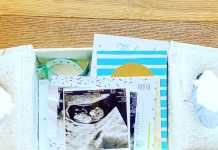A Pediatric Nurse’s Guide To Cold And Flu Season
Full disclosure: I am a pediatric emergency nurse. But, first, I am a mom. This post is not meant to serve as medical advice. I only share with you tried-and-true tidbits I’ve learned over 11 years as a mother and 3 years as a nurse. Every child and family is different, and I encourage you to seek counsel from your trusted healthcare provider if necessary.
 It’s still warm outside, but don’t let that fool you. Respiratory Season, as we in the biz affectionately refer to it, is upon us. We are already in the midst of the Back-to-School Boogers, and if The Funk hasn’t hit your house yet, you’re lucky. So, now is the time to get prepared. This is not unlike how you would prepare for Hurricane Season or The Apocalypse. It’s coming, and I’m going to tell you what you need when it’s time to hunker down.
It’s still warm outside, but don’t let that fool you. Respiratory Season, as we in the biz affectionately refer to it, is upon us. We are already in the midst of the Back-to-School Boogers, and if The Funk hasn’t hit your house yet, you’re lucky. So, now is the time to get prepared. This is not unlike how you would prepare for Hurricane Season or The Apocalypse. It’s coming, and I’m going to tell you what you need when it’s time to hunker down.
Prevention
With school-age children, getting sick is unavoidable. But, remember to put forth your best mitigation efforts by instilling good habits. Encourage proper hand hygiene, especially after the restroom and before meals. Teach children to cough/sneeze into the elbow. Discuss nutrition with your pediatrician. And, if you vaccinate, keep the kiddos up-to-date and call your pediatrician’s office to inquire about flu shots because it’s about that time.
Thermometers
You need a good thermometer. In babies (think under 1 year), rectal temps are the most accurate. I used this one with my babies and added a little KY to the tip for lubrication. Beyond that, in people who are able do so correctly, oral temps are best. If you’re caught in the middle, I like this one. Make sure you have a supply of batteries and probe covers if needed.
Snot Stuff
No one likes a runny nose. Have high quality Kleenex on hand for those who can blow. Just be advised that too much wiping and blowing can rub the nose raw, leading to skin breakdown, and potentially an infection like impetigo (ask me how I know). So, if you notice some rawness, think about a little Aquaphor or Neosporin on the area. For the littles who can’t blow, you’re going to want suction. I LOVE the Nose Frida — calm down, there’s a filter so you’re not drinking your kid’s snot — and find it far superior to the bulb syringe hospitals provide.
If the mucus is super thick, put a few drops of saline in the nose prior to suctioning to thin out those secretions. Take care to use just saline though; other nasal sprays typically contain medication, and you’ll want to consult your doctor before using. Oh, and you’re going to want to suction those babies before they eat; they will take the bottle so much better.
Fever Medications
Ideally, you want two types of medication for pain and fever: ibuprofen and acetaminophen. Ibuprofen is the medication used in products like Motrin and Advil. Acetaminophen is the medication in Tylenol. So, two different medications. Be sure to check your labels to ensure that you are using the correct concentrations and message your pediatrician to determine appropriate dosing based on your child’s weight. If you find that you can’t beat a fever despite the use of fever-reducing medications, chances are you’re dosing inappropriately, either by amount or timing. For timing, a good rule of thumb is alternating medications every 3 hours. Example: Motrin at 3:00, Tylenol at 6:00, Motrin at 9:00, Tylenol at 12:00, and so on. Again, check with your pediatrician if you have any questions about medication administration.
Important note: Some over-the-counter cold medicines also contain acetaminophen. Check those labels and make sure you’re not adding Tylenol on top of medication that already has acetaminophen. Also, ibuprofen should be avoided in babies under 6 months; babies that young should only have Tylenol.
And speaking of medications, let’s address this real quick. Not every illness warrants an antibiotic. For the common cold, flu, RSV, covid, and other viruses, antibiotics won’t help. This is because antibiotics only fight bacteria and don’t do anything for viruses. You would want an antibiotic for a bacterial ear infection or strep throat, something caused by bacteria. Much of what we see during Respiratory Season is viral and is therefore best combatted by symptomatic management and comfort care, so stay on top of those fevers, suction those noses, and stay hydrated, which brings me to my next point…
Stock the Kitchen
When you’re feeling funky, eating may not be a priority, which is fine for a little while. But, we need to hydrate. We love Pedialyte, but Gatorade and flavored water are better than nothing. Also — and this is a mom thing not a nurse thing — I love an ice-cold Coke when I’m sick. My mom used to give me a big thermos with a straw and let me go to town with the Coke when I was little, and now I crave it when I’m sick. She did the same with Sprite when I had a stomach bug. So, remember to give the kids some comfort, too. Kid doesn’t want to drink? Try Popsicles. That counts as fluid. Of course, if your kiddo won’t take anything, do let your healthcare provider know, as that could be cause for concern and may require a higher level of care.
You’ll also want to think about soup. When I’m sick, I like to send my husband out to to grab Mama Mandola’s Sicilian Chicken Soup from Carrabba’s. But, if you want to make it yourself, here is their recipe. It freezes well (just don’t add the pasta if you freeze) and is handy to have at the ready. I also love Saltgrass’s baked potato soup (call ahead to see if they have it), and La Madeleine and Panera have a variety of soups always ready to go. But, I’ve saved the best for last: this matzo ball soup. Just trust me and go get some, freeze it, and follow the directions for reheating in the post.
Don’t Forget
Make sure your kiddo is comfy and cozy. Spread out a big, cozy blanket on the floor, and let them make a bed out of couch cushions. Have some cute fuzzy socks just to use when they’re sick. Give them a special cup to use. Still, don’t forget the practical stuff. You’ll want to change out the toothbrush and wash the linens once the sickness passes. Make sure you have some Clorox or Lysol wipes to wipe down surfaces regularly to hopefully prevent the spread.
Most Importantly
If you don’t already have one, now is the time to get established with a pediatrician. Make sure to choose one who can see your child in a reasonable amount of time. It doesn’t do any good to have a doctor who can’t see a sick kid until the following week. Click here for a list of Children’s Hospital pediatricians and here to get set up with Ochsner. Having a relationship with a provider who knows your child is of the utmost importance. You want to maintain consistent care; you want someone who keeps track of your child’s health over time. You don’t want to go to urgent care or the ER every time your kid gets an ear infection and wind up seeing a different provider each visit. This is the pediatrician’s bread and butter. That said, do visit the ER if you suspect an emergency that your pediatrician can’t handle.
















